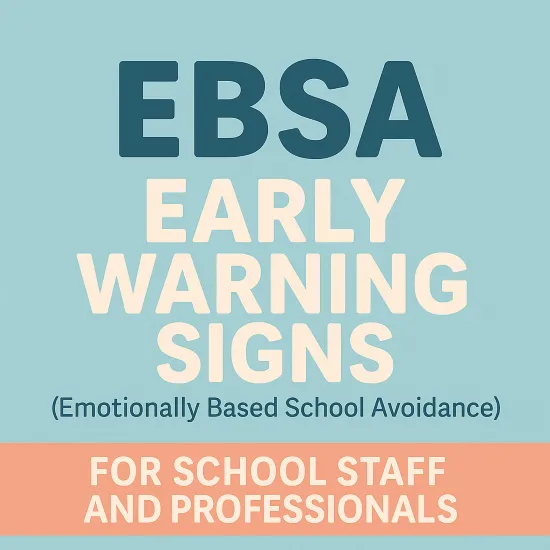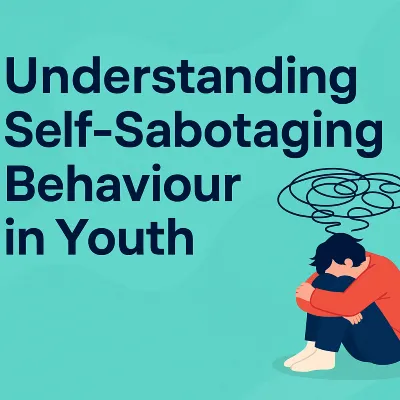Understanding What It Means to Be Trauma-Informed
Being a trauma-informed practitioner means recognising and understanding the profound impact trauma can have on a child’s behaviour, emotions, and overall well-being. It involves using this knowledge to intentionally create environments that prioritise safety, provide support, and empower children to heal and thrive.
To truly understand trauma, it is essential to explore its psychological, physiological, and social effects on children. Achieving this level of understanding requires a commitment to research, training, thoughtful reflection, and engagement with real-world experiences.
This knowledge empowers you to create environments prioritising safety, providing support, and empowering children to heal and thrive. Additionally, prioritising self-care, such as seeking supervision, is crucial. Delving deeply into trauma can be emotionally taxing, and taking steps to protect your mental well-being ensures you can continue to provide effective and compassionate support (Bath, 2008).
Applying Trauma-Informed Frameworks

PACE Model
The PACE model was developed by Dan Hughes (Hughes, 2015) and is a trauma-informed approach primarily used to build secure and trusting relationships, especially with children who have experienced trauma.
- Playfulness – Playfulness involves creating a light-hearted and non-threatening atmosphere that helps children to feel safe, secure and connected.
- Acceptance – Acceptance involves valuing the child unconditionally and recognising their feelings, thoughts, and behaviours without judgement.
- Curiosity – Curiosity means understanding the child’s internal world by asking open-ended questions and showing interest in their perspective.
- Empathy – Empathy involves profoundly connecting with the child’s feelings and showing understanding through your words, tone, and actions.
Examples of the PACE model in action can be found here.
SAMHSA’s Six Principles of Trauma-Informed Care
SAMHSA outlines six guiding principles to create trauma-informed systems and practices. These principles guide practitioners in creating supportive environments that promote healing and resilience (SAMHSA, 2014).
- Safety – Ensure physical and emotional safety for individuals to reduce the risk of re-traumatisation.
- Trustworthiness – Build trust by maintaining open communication, setting clear expectations, and being consistent.
- Peer Support – Leverage shared experiences to build trust and promote healing.
- Collaboration – Foster an equal partnership between individuals and providers, recognising their expertise in their own experiences.
- Empowerment – Focus on strengths and provide opportunities for individuals to make their own decisions.
- Cultural Humility - The last principle of the SAMHSA model, involves acknowledging and respecting cultural backgrounds, historical contexts, and gender identities to avoid reinforcing biases or stereotypes.
Examples of the SAMHSA model in action can be found here.
Prioritising Emotional and Physical Safety in Trauma-Informed Care

It is essential that any space you use is both physically and emotionally safe for you and the child you are working with. Prioritising the avoidance of harm or potential re-traumatization should be one of your primary objectives. Therefore, before beginning any work with children, it is essential to incorporate the following practices:
Creating Safe Spaces
You can make a physically and emotionally safe environment for children by incorporating the suggestions below into your practice. This will help make your approach more trauma-informed.
Use calm colours and soft lighting within a distraction-free space to create an inviting and comfortable environment for children. Allowing easy access to an exit will promote safety and give children control over their environment. You should ensure that the space is free from unexpected disruptions, such as loud noises, which can be perceived as a threat by children, potentially putting them into a hyper-vigilant state (Perry, 2006).
By being attuned to the current emotions of the children you are working with, you can spot early signs of heightened emotions, such as an outburst of anger. This level of empathy and understanding will allow you to respond to heightened emotions to ensure a safe environment. This may involve moving a table to create space for pacing or positioning yourself between the child and a triggering object if they attempt to approach it aggressively (Perry, 2006).
Creating Emotional Safety
Before starting, inform the child about what to expect, the topics that may be discussed, and what they can do if they feel upset, agitated, or angry. This will reduce anxiety and promote emotional safety as the child will know what to expect (Perry, 2006; SAMHSA, 2014).
Outline the roles of each participant and establish the limits that will be adhered to during discussions. For example, you might agree that you will not continue exploring that topic if the child says "no" twice. The child may feel it's okay to be angry, but breaking or throwing things is unacceptable. Additionally, you should agree on scenarios that will automatically end the session, such as if either person is feeling unsafe. For children with communication difficulties, you could incorporate flash cards or visuals (SAMHSA, 2014).
During sessions, statements like “It sounds like that made you feel angry” or “It is understandable to feel upset about that” will help validate a child’s feelings and are done in a way that acknowledges their feelings without adding shame or judgment (van der Kolk, 2015).
Children should be empowered to make decisions about their engagement with you. This fosters a sense of control, which is often diminished in traumatic experiences. You can support this by allowing the child to work at their own pace and only share what they feel comfortable discussing when they are ready (Perry, 2006; van der Kolk, 2015).
When sessions do not go as planned, calming techniques, such as deep breathing and mindfulness, can help ground children feeling overwhelmed. This, again, helps give the child control over the situation (van der Kolk, 2015).
Be Consistent and Reliable
Broken promises can harm trust and negatively affect your relationship with a child. It’s essential to keep commitments and communicate whenever a promise cannot be fulfilled to prevent this (SAMHSA, 2014; Perry, 2006).
Plans can change over time, but these changes mustn’t be suddenly announced to children. Whenever possible, provide advance notice of any changes to help them adjust. Consistency and predictability are critical in creating a sense of safety for children, especially those who have experienced trauma (Perry, 2006; van der Kolk, 2015).
Recognising Triggers
Be mindful of how you communicate with children; different tones, languages, and gestures will be interpreted differently based on the individual experiences of that child. Equally important is your body language, position and posture – If you are towering over a child, you might be perceived as a threat and cause a fight or flight trauma response in the child.
A calm and empathetic approach will offer a safe space for children, and supportive comments like “You are safe here; take your time to respond” will help the child feel more comfortable (van der Kolk, 2015).
Collaborating with Children to Build Safe and Supportive Spaces

Collaboration and empowerment are key to creating safe environments with children. Children are more likely to buy in and engage with you when they are part of creating safe spaces and are allowed to participate in writing crucial documents such as safety plans.
When unsure, ask for the child’s input; if they seem uncomfortable, ask, “How can I help you feel more comfortable?” Simply asking, “What do you think needs to happen next?” is a powerful question. If the child cannot answer, you can prompt a response by suggesting various outcomes.
If appropriate, you can encourage positive interactions with others in small groups, which can help the participants feel listened to, supported, and valued. These could be groups of peers who have similar needs or have faced similar experiences.
Building Empathy and Understanding
Empathy and understanding are central to any trauma-informed practice; together, they foster trust, connections, and healing. Empathy allows you to see and understand the experiences of others without judgment. Understanding trauma helps you to respond with compassion and sensitivity (van der Kolk, 2015; Perry & Szalavitz, 2017).
For trauma survivors, being seen, heard, and valued helps to restore a sense of safety and dignity. Compassionate listening, sensitive responses, and curiosity can lead to safe spaces where healing and resilience are possible (SAMHSA, 2014; Bloom, 2013).
Building a Deeper Understanding: Developing Awareness of Trauma
Empathy begins with a foundation of knowledge about how trauma affects children physically, emotionally, and mentally.
Trauma has the power to rewire the connections that brains make. For example, a child who has witnessed domestic abuse, which involved shouting and banging, might become dysregulated by unexpected loud noises. The child’s brain has associated loud noises with danger, causing the body to enter fight or flight mode (van der Kolk, 2015; Perry & Szalavitz, 2017).
Similarly, a child who has been abused might become unregulated for no apparent reason; however, through listening and understanding, you might come to understand that a particular smell, hairstyle or even style of clothing was the trigger as their abuses wore a similar style and upon seeing or smelling this their fight or flight response has been activated.
Recognising trauma responses such as withdrawal, anger, or dissociation as survival mechanisms will allow you a deeper understanding of the child. Being curious about the cause and not the behaviour will allow you to build a judgement-free relationship with children. Remember you should ask, “What happened to you?” rather than “What is wrong with you?” (SAMHSA, 2014; Bloom, 2013).
One point that a lot of people struggle with understanding is the truth that two children can witness the same traumatic experience. One might need therapeutic support afterwards as it has had an impact on their mental health, and the other might go about their day with no support required. You need to acknowledge that trauma affects everyone differently based on their experiences, level of resilience, and support systems.
Compassionate Listening and Trauma-Sensitive Language
Active listening will create spaces where children feel seen and heard; this is a crucial step in their healing journey (Rogers, 1951; van der Kolk, 2015).
Active listening involves being present in the moment, removing distractions, reflecting on what they have shared with you, validating their emotions and using open-ended questions that allow the child to share at their own pace (Rogers, 1951).
The vital part of non-judgemental listening is to avoid trying to ‘fix’ the situation. At this stage, you should listen and clarify what they say and not offer advice or solutions. Use this time to join them in their experience.
Be aware that trauma survivors are often clouded in shame, stigma and self-blame. By working in a trauma-informed way and removing judgment, you can focus on understanding their journey without adding any extra shame or blame onto their shoulders.
Some tips for removing judgment from your practice include:
- Stop focusing on the behaviour and start understanding the cause; this means recognising that the behaviour is likely a trauma response and not a personal attack on you.
- Challenge your assumptions, stereotypes, and biases about people’s experiences and recognise that each trauma is unique to each child.
- Understand that trauma survivors will often blame themselves; you can counter this with kindness by helping them understand that they did what they needed to do to survive at that moment (Siegel & Bryson, 2020).
A counterpart of non-judgemental listening would be using trauma-sensitive language when responding. Language such as “children who have experienced trauma” rather than “trauma victims” helps to focus the conversation on the child and not the label, which will help to help stigma.
The last part of non-judgemental language is respectful and compassionate body language. Non-verbal cues can be useful for conveying empathy and understanding to children. Maintaining appropriate eye contact will show the child that you are engaging with them whilst respecting personal boundaries (Siegel & Bryson, 2020).
Relaxed shoulders and uncrossed arms will display an open body posture, which will help the child to feel more comfortable; while it might seem obvious now, in the moment, dynamics can change in the blink of an eye; therefore, you need to ensure that you stay grounded and in control of own emotions. A calm presence will also help the child feel relaxed and safe.
Fostering Equality: Reducing Power Imbalances
In almost all settings, there will be a power imbalance between you and the child, making the child feel stressed, anxious or threatened. You can reduce the power imbalance by being transparent about your role, the process you are following, and the decisions you are making or you might take. Transparency can help reduce anxiety in children as they better understand what will happen next – giving them greater control over the situation (SAMHSA, 2014).
Giving choices and involving the child in decision-making helps reduce power imbalance by passing some of the power to the child. A choice such as “Should we talk about X first or Y first?” gives the child control over the situation.
Respecting autonomy and opinion is another way of passing the power to the child. Empowering the child to make decisions and have an opinion on what they feel should happen gives them an element of control and power (Freire, 1970; SAMHSA, 2014).
Respecting boundaries is essential; asking for consent reduces the power imbalance. A simple “Is it ok to help you do up your jacket?” will help show that you respect their boundaries(Rogers, 1951).
Addressing children as equals with the same level of respect that you would give an adult or colleague will help maintain their dignity and make them feel less patronised; this could include not talking down to them or creating opportunities for them to express their opinions and advocating for themselves. (Freire, 1970; Siegel & Bryson, 2020).
Online Training in Trauma-Informed Care
- The National Child Traumatic Stress Network (NCTSN) - Free online resources and training on trauma-informed care, especially for child welfare and healthcare professionals.
- Beacon House - Provides training on developmental trauma, attachment, and therapeutic support for children and families.
- Barnardo’s - Offers trauma-informed training for those working with vulnerable children and families.
- Trauma-Informed Schools UK - Training for educators, school staff, and child-focused professionals to embed trauma-informed practices in schools.
Exploring and Accessing Trauma Research
Adverse Childhood Experiences (ACEs) Research
Adverse Childhood Experiences (ACEs) are significant events in childhood, such as abuse, neglect, or household dysfunction, which can have profound effects on long-term physical and mental health.
Neuroscience and Trauma Research
- Neuroplasticity and Recovery from Trauma: Research how therapeutic interventions can reshape neural pathways and promote healing.
- Chronic Stress and Brain Function: McEwen, B. S., & Gianaros, P. J. (2010): Focus on how chronic stress alters neural plasticity and contributes to long-term health issues.
- The Effects of Trauma on Brain Development: Perry, B. D. (2009): Research on how trauma disrupts brain development, particularly in the amygdala, hippocampus, and prefrontal cortex.
Systematic Reviews and Meta-Analyses
- Trauma-Informed Interventions: Systematic Review: Dym Bartlett, J., & Steber, K. (2019): Review of the impact of trauma-informed care across settings, showing reductions in symptoms and improved engagement.
- Resilience in Trauma Survivors: Bonanno, G. A. (2004): Research into why some individuals recover from trauma without long-term effects.
Trauma and Cultural Sensitivity
- Cultural Competence in Trauma-Informed Care: Research on the importance of cultural humility and addressing systemic inequities in trauma-informed frameworks.
- Historical and Intergenerational Trauma: Brave Heart, M. Y. H. (1998): Study of historical trauma in Native American populations and its multigenerational effects.
Online Platforms for Trauma-Informed Research
- PubMed: Peer-reviewed articles on trauma and its impacts.
- Google Scholar: A wide range of academic papers on trauma-informed care.
- ResearchGate: Connect with researchers and access trauma-related studies.
Conclusion
Being trauma-informed is not a one-time effort but an ongoing commitment to understanding and addressing the complex impacts of trauma. By fostering safe, supportive, and empowering environments, we create spaces where children feel valued, heard, and respected.
Whether through empathetic listening, consistent care, or recognising the unique needs of each child, trauma-informed practices empower us to support healing and resilience. By continuing to educate ourselves and adapt our approaches, we can ensure that every interaction contributes to restoring a sense of safety and dignity for those who have experienced trauma.


